A landmark event has just taken place in China’s auto market: sales of new energy vehicles have surpassed those of fuel vehicles!
According to the data of the Passenger Federation, from the 1st to the 14th of this month, the retail sales of new energy vehicles 260,000 (the retail sales of passenger cars are 516,000), accounting for 50.39%, officially exceeding 50%.
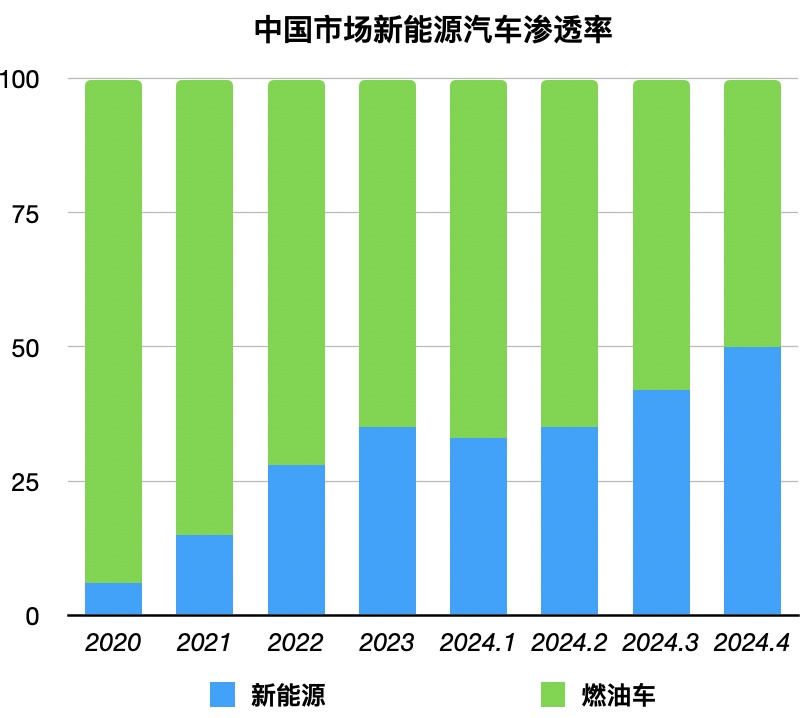
New energy vehicle penetration rate finally broke 50%
New energy vehicle sales all the way, 1-14 this month compared with the same period last year increased by 32%; this year the cumulative retail 2.032 million vehicles, an increase of 34%.
In contrast, it is the "collapse" of traditional fuel vehicles. Especially the joint venture brand fuel vehicles, after dominating the market for many years, have experienced a historic collapse. In the past March, the sales of Honda Accord, which once topped the chart, fell by 72.6% year-on-year, Toyota Camry fell by 59.2%, and the Volkswagen Bora, Toyota Corolla, and Honda Fit, which are known as supercars, also fell by more than 50%.

Sales of some joint-venture fuel vehicles plunged in March (according to First Electric).
Breaking through 50% means that the car has broken through an important threshold, which is not only an important threshold for the popularization of new technologies, but also a "psychological threshold" for consumers to accept new energy vehicles.
In the classic book "The Diffusion of Innovation", the American scholar Everett Rogers proposed an innovation diffusion model that divides the process of consumer acceptance of new technologies into five stages.
The first stage is that a very small number of "innovators" take the plunge; the second stage is that a small number of "early adopters" go to the early adopters; the third stage is that the "early masses" follow the trend; the fourth stage is that the relatively conservative "late masses" finally take action; the fifth stage is that the "laggards" who lag behind the mass consumer group follow.
The penetration rate of 50% means that the acceptance of new energy vehicles by Chinese consumers is crossing the third stage, which will attract a large number of consumers who have been waiting to enter the market.
Only when new technologies are recognized by large-scale consumer groups will they truly enter the "popularization period".
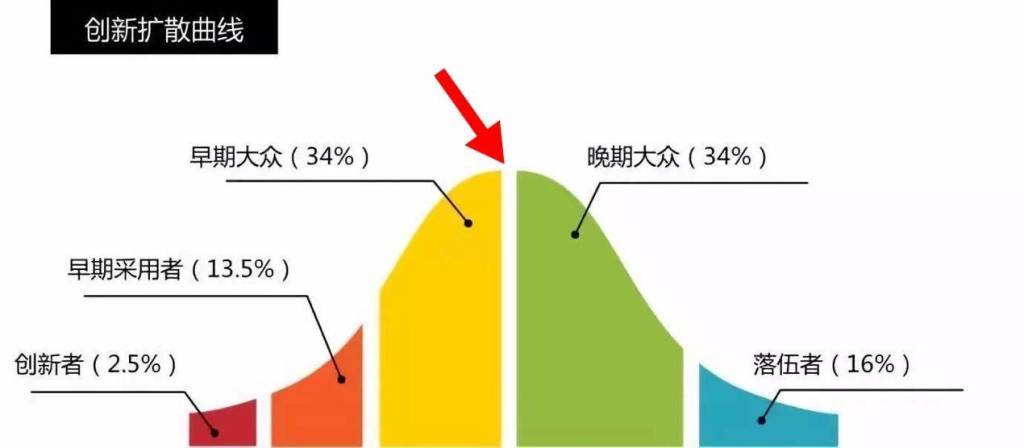
The consumption of new energy vehicles in our country is entering the "popularization period"
Of course, not all new technologies will be recognized and accepted by consumers, and many will "collapse in the middle". In Rogers’ innovation diffusion model, there is another important threshold called the "chasm", also known as the "valley of death". If it cannot be crossed, the promotion of new technologies can only be abandoned halfway and cannot be popularized.
This "valley of death" lies between the second and third stages of innovation diffusion, corresponding to about 16% of the consumer population.
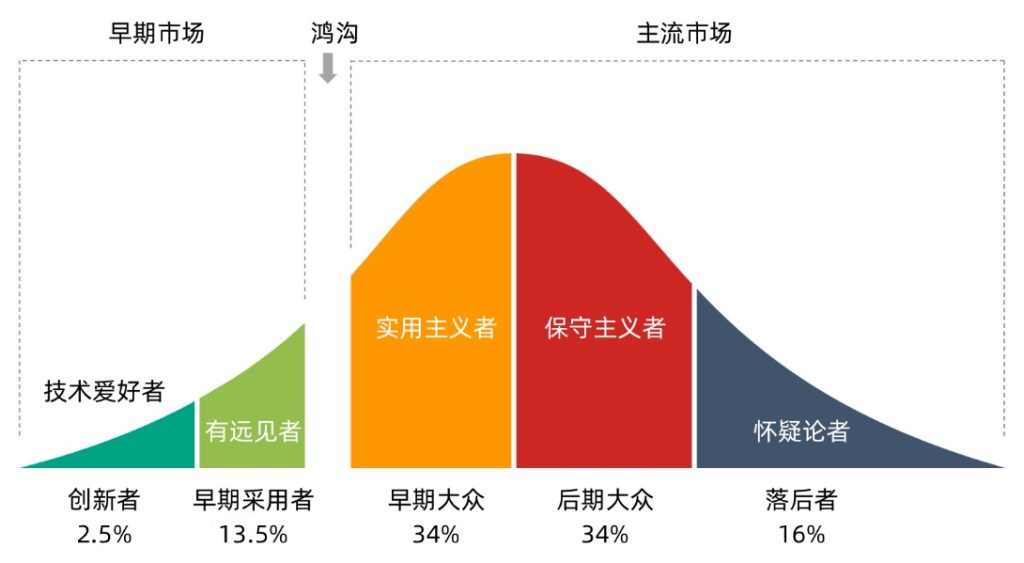
New technologies may encounter the "valley of death" in the process of promotion
For new energy vehicles, the "Valley of Death" will appear when the penetration rate reaches about 16%. Our country’s new energy vehicles have successfully crossed the "Valley of Death", and the time node is August 2021.
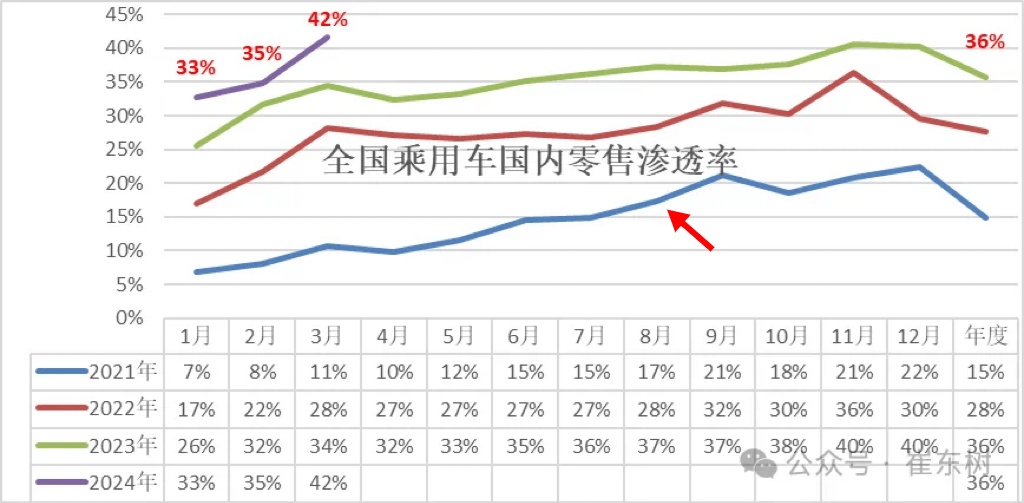
New technologies may encounter the "valley of death" in the process of promotion
It is from 2021 that our country’s automobile plug-in technology has undergone a major upgrade, driving the sales of new energy vehicles into a rapid growth channel. Chinese brand plug-in hybrid models have launched a fatal blow to fuel vehicles.
Compared with fuel vehicles, plug-in hybrid models have stronger performance, lower fuel consumption, and lower cost of use, forming a "technical suppression" of fuel vehicles. As Ouyang Minggao, an academician of the Chinese Academy of Sciences, said, "Plug-in hybrid includes all the functions of fuel, plug-in, range extension, and pure electric, and is a veritable’all-round player ‘."
After Chinese brands slashed the price of plug-in models, the market share of joint venture fuel vehicles was quickly eroded.
The penetration rate of new energy vehicles has exceeded 50%, which means that mainstream consumer groups have accepted plug-in and electric new technologies, and green travel solutions have been widely praised. For new energy vehicles, consumers have turned from curiosity, doubts, wait-and-see to love and actual purchase.
The core reason why fuel vehicles are in trouble is that technological innovation has been stagnant for a long time, and product strength has been eclipsed. In more than a decade, there has been no substantial technological progress in internal combustion engines and gearboxes. The industry generally believes that fuel vehicle technology has entered the end of its life cycle, and the relevant R & D resources of major manufacturers are shrinking sharply.
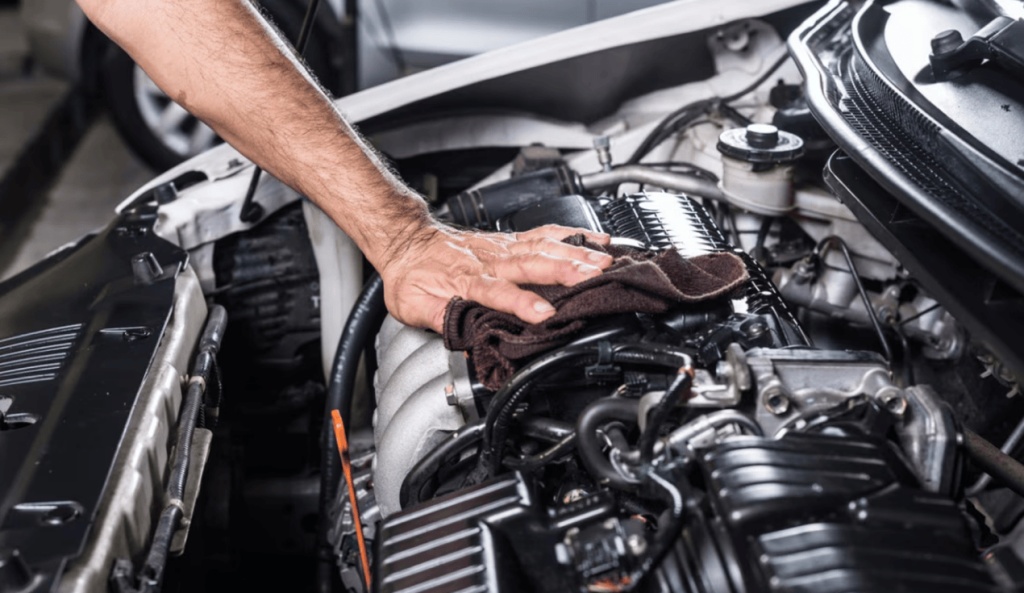
The technical update of fuel vehicles has stalled
Not only that, fuel vehicles are also unable to cope with the intelligent wave that is sweeping the automotive industry, and electric vehicles have obvious advantages in terms of linear control, response speed, and control accuracy, making them a natural intelligent platform.
Richard Thaler, a Nobel laureate in economics, said: "Humans experience life through change." New energy vehicles continue to show people technological updates, becoming faster, more economical, and smarter. However, fuel vehicles remain unchanged. People’s interest in fuel vehicles is becoming less and less, and the decline of fuel vehicles is inevitable.